Tiffany Beebe, PhD Candidate at University of Colorado Boulder
As a PhD researcher working on the “refugee industrialists” who settled in Britain during the Second World War, I’ve spent countless hours in dozens of archives reading dusty old business files and government reports. Don’t get me wrong, I love my work but sometimes it’s a little too quiet. On a beautiful, cold November day in 2019 I woke up and couldn’t face a day in the reading rooms; I needed to be outside. On a whim I hopped on the bus to Pontypridd and the old Treforest Trading Estate to explore the place where so many of the refugee industrialists I study rebuilt their lives after fleeing Nazism. Within moments of walking into Pontypridd’s local history museum and chatting with the staff, I was being led down to the basement where the excited staff member informed me I just had to see all of their photo albums of the old estate. Historians dream of these kinds of chance encounters!
Leonard Taylor’s Photographic Coverage
The must-see photo albums were compiled by Leonard Taylor, who was commissioned to document the newly completed Treforest Trading Estate in 1939. In a note he left with his donated collection, he wrote that from the moment he alighted from the bus at Treforest, the estate captured his imagination. I must say I felt the same—the industrial estate today is a curious mix of old and new, often appearing ramshackle compared to its meticulously planned origins. Taylor was taken aback by the total change in the look and feel of the area, compared to his previous visits, thanks to the modern new industrial project. His photographs showcase the innovative industrial program, modern factories available to entrepreneurs, and the new employment opportunities provided to men, women, and young adults in the Rhondda Valley. Picture after picture shows women sorting electrical parts, men turning heavy barrels of chemicals for the leather tannery, lines of workers boxing products to send out to stores around the world. For many of these people, this would have been their first industrial job. Coal mining had been the norm here, and the Great Depression meant upwards of 80% of the Rhondda Valley experienced unemployment during the 1930s. Taylor’s black and white images capture the new feeling of hope that Treforest represented.
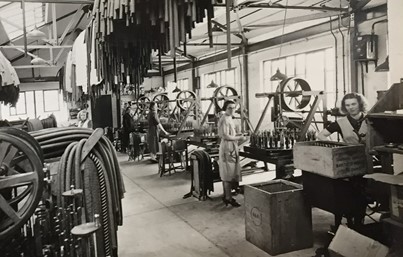
Missing from Taylor’s images are the entrepreneurs who took a risk on this new industrial endeavour, and those for whom Treforest became a safe haven. By the middle of the Second World War, there were 57 refugee factories in South Wales, largely on Treforest. These refugees were mostly Jewish businessmen from German, Austria, and Czechoslovakia who had been given British visas in exchange for participating in this new industrial project to create employment. At the height of the war, Berliner Joachim Koppel’s factory Aero Zipp employed almost 350 people making metal parts and tools for the military. Julius and Moritz Mendle employed dozens of women at their factory, Mendle Bros., making plastic Royal Air Force goggles during the war, and toiletry goods in peace time. Oskar Peschek’s and Hugo Kurzman’s O.P. Chocolates, now in Merthyr Tydfil, still sells their famous Austrian chocolates (among other treats). While only a few of the businesses remain today (in different forms), they were important employers for decades in South Wales. Many of these refugee industrialists put down roots in South Wales, became important social and cultural leaders within their communities, and many of their families still live in the area today.
Walking the old Treforest Trading Estate
Armed with my own copies of Taylor’s work, I set off to walk the old trading estate and see what remains today. Of course, it has changed significantly in the intervening 80 years, but remnants of the art deco modernist buildings remain. Take for example the old post office building:
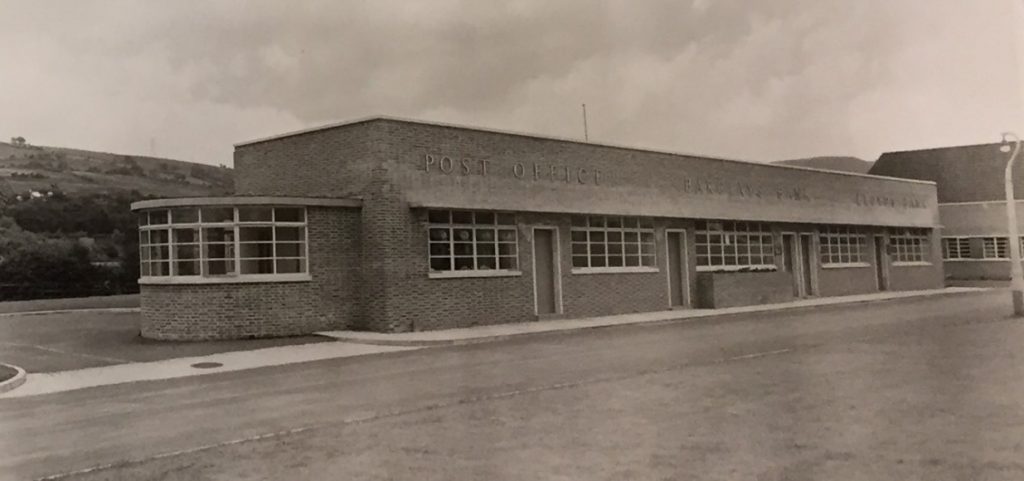
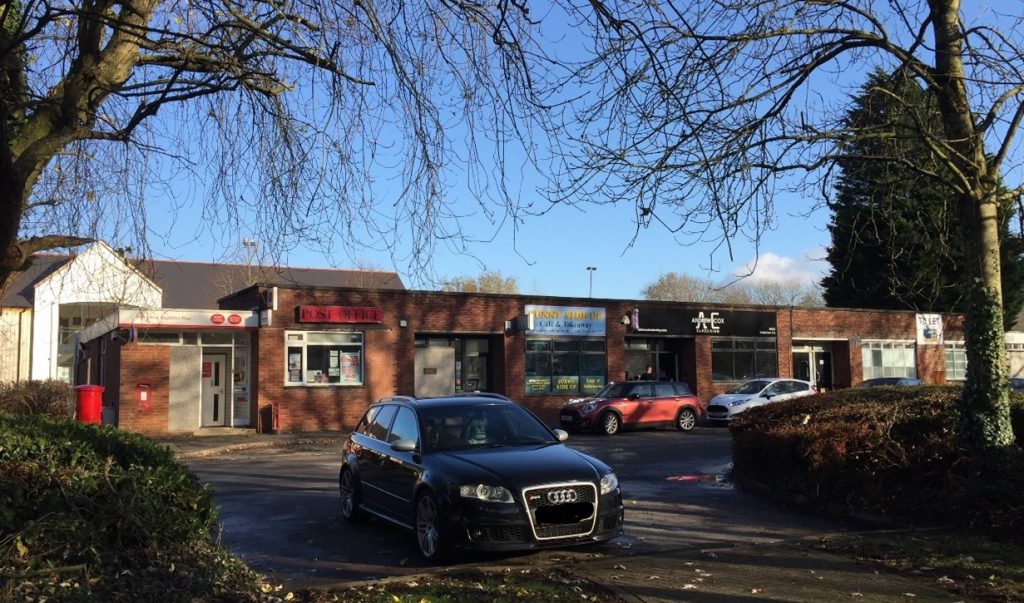
You can see how the building has kept its basic structure, but has been adapted for modern use. The end unit on the left has been a post office since it opened in 1938. The Barclays and Lloyds banks that operated in the other two units have long since closed, and a multitude of other shops have occupied these spaces—just like the other original buildings on the estate.
Simple beginnings in standardized factories
Taylor also photographed several of the standardized factories that were one of the key innovative incentives of a place like Treforest. These units could be adapted to almost any type of production and were available on shorter rental leases; ideal for entrepreneurs who couldn’t invest heavily in purchasing factories or who did not require customized spaces. For refugees fleeing the Continent, the ready availability of rented factory space was a necessity. They usually escaped with very little of their assets, and these factories allowed them to set up business remarkably quickly.
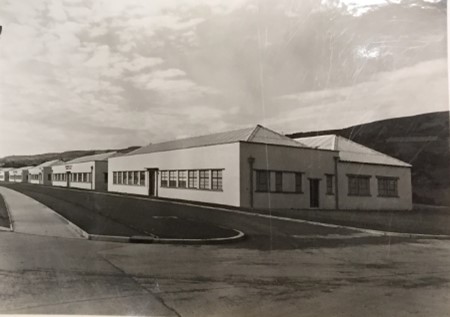
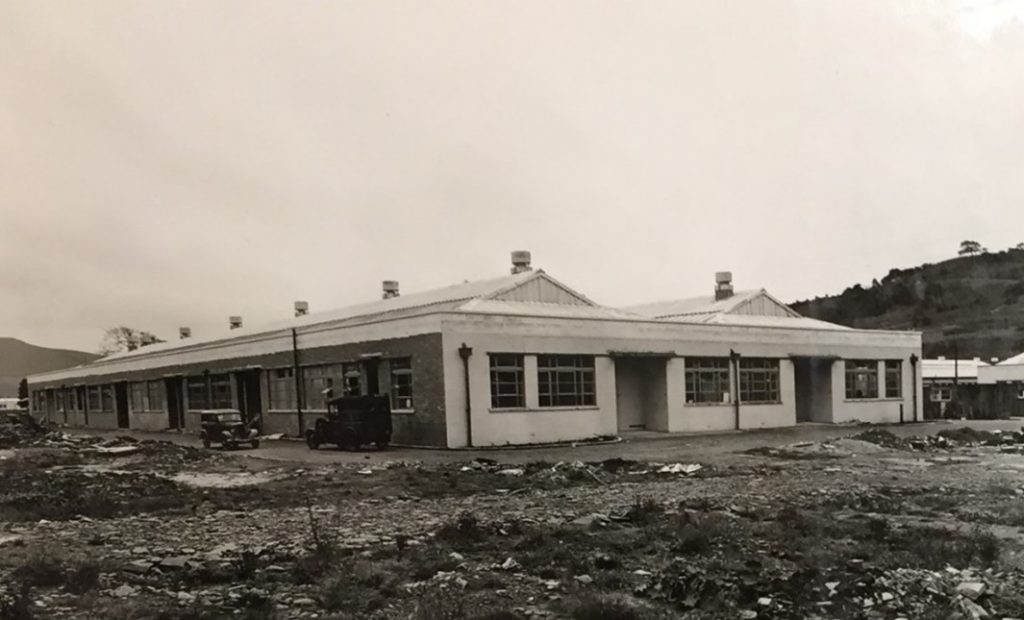
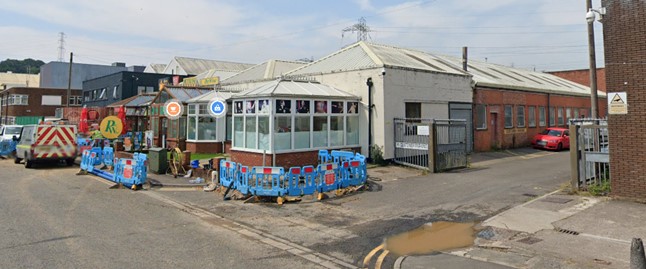
Stories behind the names
Sadly, much of the original estate has been demolished and replaced, or adapted into new buildings that became almost unrecognizable from their originals (like the A.4 nest factories above). Still, using Taylor’s photo albums as a guide, I was able to identify several former refugee industrialist factories. Even where the old factories are (mostly) gone, it’s still possible to read into their refugee history based on the names they’ve left behind. Below you can see Rizla House, where factory A.2 General Paper & Box used to be located. General Paper & Box was opened by Paul Schoenmann, Herman Toffler, Rudolph Wilhelm in 1939 to produce cigarette papers and cardboard boxes. While all Jewish refugees, none of the men had known each other prior to entering into business together; they were connected through the offices of the National Industrial Council of Wales and Monmouthshire. The cigarette paper company Rizla quickly became one of their biggest customers, and later bought the company out in 1948. This modern building doesn’t appear to be original, but it still bears the Rizla name.
Read more about the Schoenmanns and hear an oral history by Paul’s son George (External)
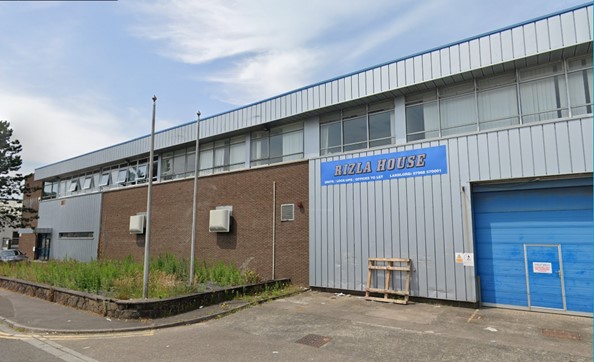
Just a few doors down from Rizla House is this original 1930s building, bearing the name P.B. Leiner. This factory, A.6, was originally Treforest Chrome Leather, owned by German refugee Hans Oestreicher. Across the street from him at A.12 was Treforest Chemical, owned by the German Leiner family. Both of these companies did very well during the war and expanded afterwards, outgrowing their old buildings. P.B. Leiner, the current company descended from Treforest Chemical, bought out the former Treforest Chrome Leather building and still uses it today.
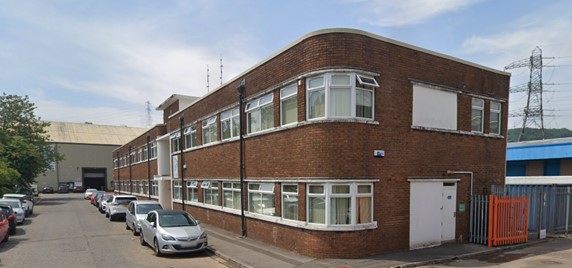
The Treforest Trading Estate has changed dramatically in the first 80 years of its existence, yet speaks to how the past and present interact. Walking through it today, you’d hardly know that in the 1930s and 1940s it became a safe haven for dozens of Jewish refugees, while at the same time growing to become a vital part of Welsh industrial history, demonstrating the resiliency and adaptability of the local people through challenging economic times and world war. The intertwined histories of the Treforest Trading Estate reminds us that when we work together, we can overcome any hardship.
About the author
Tiffany Beebe is a PhD Candidate at the University of Colorado Boulder. Her dissertation “Rebuilding Communities: Refugee Industrialists in the ‘Special Areas’ of Britain, 1934-1945” explores the wider experiences of refugee industrialists across South Wales, West Cumberland, Lanarkshire, and the North East Coast. To learn more about this research, please visit her website.
Wow, this is an excellent post! Very interesting and well written. This must have been an absolutely fascinating visit! I would love to visit the area.
Hello Tiffany,
Excellent article.
I am writing a monologue on the History of Treforest Chrome leather Works. Perhaps you might like to drop me an email?
Hi Peter,
My father worked for Treforest Chrome Leather. I would be interested in reading your history.
Hello Tiffany,
Great article!
I’ve just started doing research into ‘South Wales as an Area of Sanctuary for People Fleeing from Oppression and Discrimination’ , and your article is giving me a real boost.
I wonder whether you have a few more hints for me?
I am of German origin and have been living in Wales since 2012.
Regards, Claus Apel
Thanks for your comment Claus! I’ve passed on your message to Tiffany. In the meantime, you might like to look at Andrea Hammel’s book “Finding Refuge: Stories of the Men, Women and Children Who Fled to Wales to Escape the Nazis” (https://blackwells.co.uk/bookshop/product/Finding-Refuge-by-Andrea-Hammil/9781912905683)
Hi Morris, sorry about the delay. I read Tiffany’s and your responses only yesterday. I am now waiting for Andrea’s book to arrive. Thanks for pointing me in her direction!
I’ll stay in touch!
Hi Morris, after a long pause it’s me again. Of course I read her book and found lots of refugees’ stories that I would like to use in my article (book?) ‘Wales – Country of Sanctuary’ which is nearly complete. Quoting from her book – are there any limitations that I need to be aware of, apart from correct referencing, of course?
Answer would be much appreciated. Regards,
Claus
Hi Claus
Glad to hear you found Andrea’s book useful. In terms of quoting, as long as you’ve referenced properly there shouldn’t be a problem. There is a legal term known as ‘fair dealing’ which means that you can quote other material, just as long as you don’t quote enormous sections of the work. There isn’t a defined word limit as such – there’s some more information here: https://www.copyrightuser.org/understand/quotation/
Best wishes,
Morris
Hi Claus, As the child of refugees brought up in a tightknit circle of refugee industrialists, I am fascinated to hear more about your book. My family is referenced in Andrea’s book. I also write for the Jewish Chronicle, so would be keen to flag it to them. You can easily find me online if you want.
Fascinating stuff, thank you
Other businesses too, including the former Welsh Products Ltd factory at Goat Mill Road, Dowlais, which closed in 1990. A wood, pearl shell and later polyester Button making business that arrived in 1938, run by Rudl Adler who employed upwards of 100 people locally. The business was a leading supplier of buttons to the UK garment industry (including Burberry, M&S, Aquascutum, Austin Reed and others). Rudl moved his family from Tachov, Czechoslovakia as life there became increasingly uncertain for the local Jewish community.
Photos at http://www.alangeorge.co.uk/welsh_products.htm